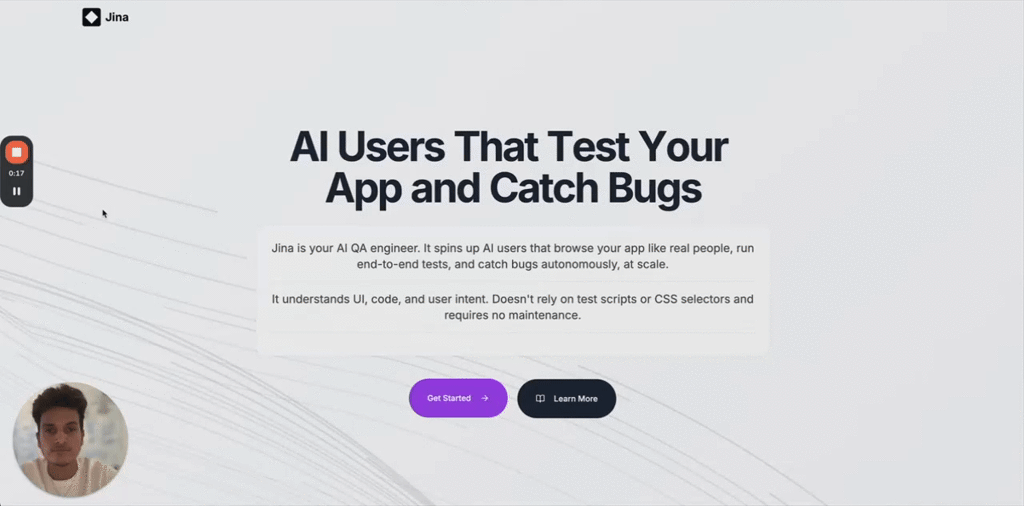
Table of Contents
Overview
In the ever-evolving landscape of software development, ensuring quality is paramount. But traditional testing methods can be time-consuming, expensive, and often struggle to keep pace with rapid development cycles. Enter Jina, an autonomous AI QA engineer poised to revolutionize how we approach application testing. Jina promises to deliver end-to-end testing at scale, identifying bugs intelligently without the burden of script maintenance. Let’s dive into what makes Jina a game-changer.
Key Features
Jina boasts a powerful suite of features designed to streamline and automate the QA process:
- Autonomous end-to-end app testing: Jina handles the entire testing process from start to finish, without manual intervention.
- Understands UI, code, and user intent: Unlike traditional tools, Jina provides a comprehensive set of APIs for handling embeddings, classification, web content retrieval, and reranking tasks.
- No reliance on scripts or CSS selectors: Say goodbye to brittle tests! Jina eliminates the need for script maintenance and CSS selector updates.
- Scalable bug detection: Jina can efficiently identify bugs across your entire application, scaling to meet the demands of complex projects.
- No maintenance required: Jina’s autonomous nature minimizes the need for ongoing maintenance, freeing up valuable time for your team.
How It Works
Jina’s magic lies in its ability to analyze application interfaces and workflows. It simulates user interactions based on inferred intent, essentially acting as a virtual user. This allows Jina to autonomously generate and execute tests, reporting bugs and providing valuable insights without requiring manual test creation. The AI learns and adapts, improving its testing capabilities over time.
Use Cases
Jina’s versatility makes it suitable for a wide range of applications:
- Continuous testing for SaaS apps: Ensure your SaaS application remains stable and reliable with continuous, automated testing.
- Regression testing during releases: Prevent regressions and ensure new releases don’t introduce unwanted bugs.
- QA for rapidly evolving codebases: Keep pace with fast-moving development cycles by automating QA for rapidly changing code.
- Non-technical teams automating quality assurance: Empower non-technical teams to automate quality assurance processes, reducing the burden on developers.
Pros & Cons
Like any tool, Jina has its strengths and weaknesses. Let’s take a look at the advantages and disadvantages.
Advantages
- No scripts/selector maintenance, saving significant time and resources.
- High automation and scalability, allowing for efficient testing at scale.
- Adapts to UI/code changes, reducing the risk of test failures due to minor updates.
Disadvantages
- May have a learning curve, requiring some initial investment to understand its capabilities.
- Potential for false positives in complex UIs, requiring careful review of reported bugs.
How Does It Compare?
When comparing Jina to other testing solutions, its autonomous nature truly sets it apart.
- Rainforest QA: While Rainforest QA relies on script-based automation, Jina eliminates the need for scripts and CSS selectors altogether.
- Testim: Testim offers a low-code testing approach, but Jina takes it a step further with fully autonomous testing and reduced maintenance.
Final Thoughts
Jina presents a compelling vision for the future of software testing. Its autonomous approach, coupled with its ability to understand UI, code, and user intent, makes it a powerful tool for teams looking to streamline their QA processes and deliver high-quality software. While there may be a learning curve, the potential benefits of reduced maintenance, increased scalability, and improved bug detection make Jina a worthy contender in the AI-powered testing space.

